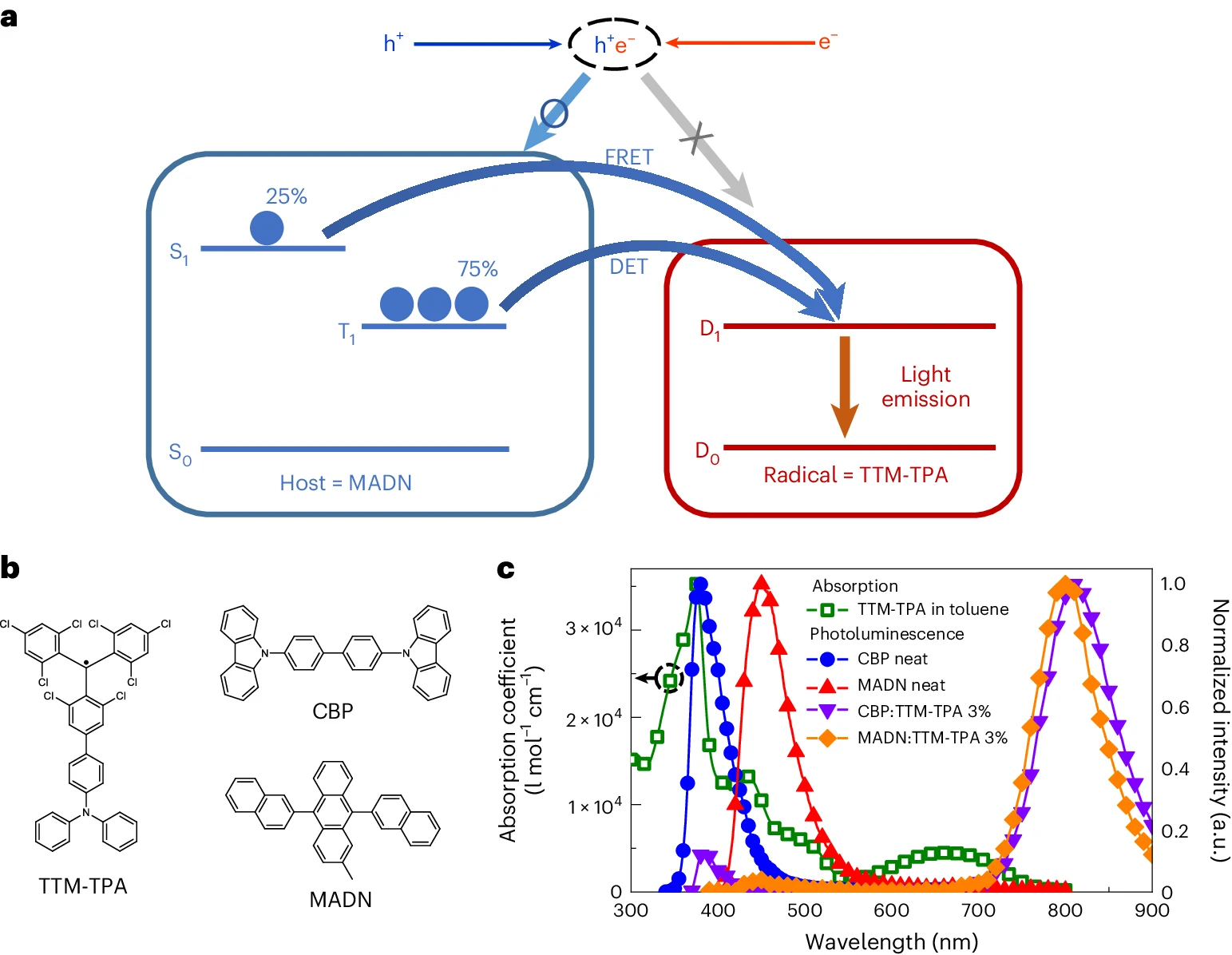New design boosts performance in radical-based OLEDs
The development of luminescent organic radicals has resulted in materials with excellent optical properties for near-infrared (NIR) emission, like organic light-emitting diodes (OLEDs). Light generation in this range could be used for healthcare diagnosis and treatment to surveillance, communications and other security applications.
Although an external quantum efficiency greater than 20% in electroluminescence has been demonstrated for visible-light OLEDs, and commercial displays are commonplace, the performance of NIR OLEDs is generally limited to 5% external quantum efficiency using fully organic emitters with emission peak wavelengths at 800 nm and longer. The materials approach and mechanisms for efficient visible-light OLEDs by maximizing luminescence from singlet and triplet excitons have not translated to efficient NIR OLEDs.
Doublet fluorescence from organic radicals is an emerging basis for highly efficient NIR light-emitting devices that exploit favourable optical, electronic and spin properties for optoelectronics. Luminescent organic radicals can have high photoluminescence quantum yield in the NIR range. Almost 100% internal quantum efficiency for electroluminescence was demonstrated in radical OLEDs exploiting tris(2,4,6-trichlorophenyl)methyl (TTM)-based radicals. This performance shows that using the doublet-spin manifold in radicals for luminescence can circumvent the typical efficiency limits (25% internal quantum efficiency) arising from the formation of singlet and triplet excitons in standard closed-shell molecule-based devices.
Although the unpaired electron arrangements of radicals enable efficient radiative transitions within the doublet-spin manifold in organic light-emitting diodes, their performance is limited by non-radiative pathways introduced in electroluminescence.

Now, a team of researchers uses 1 a host–guest design for organic light-emitting diodes that exploits energy transfer with a boost of external quantum efficiency for 800 nm emission. The tris(2,4,6-trichlorophenyl)methyl-triphenyl-amine radical guest is energy-matched to the triplet state in a charge-transporting anthracene-derivative host.
The researchers show from optical spectroscopy and quantum-chemical modelling that reversible host–guest triplet–doublet energy transfer allows efficient harvesting of host triplet excitons.
The luminescent NIR radical system is implemented in high-performing OLEDs with a maximum external quantum efficiency of 9.6% for electroluminescence at 800 nm that operate to the high maximum radiance of ∼68,000 mW sr−1 m−2, with low efficiency roll-off and enhanced stability.
This new design boosts performance in radical-based OLEDs and has broad implications for reducing non-radiative losses in devices beyond light-emitting applications with NIR light.
Author: César Tomé López is a science writer and the editor of Mapping Ignorance
Disclaimer: Parts of this article may have been copied verbatim or almost verbatim from the referenced research paper/s.
References
- Cho, HH., Gorgon, S., Londi, G. et al. (2024) Efficient near-infrared organic light-emitting diodes with emission from spin doublet excitons. Nat. Photon. doi: 10.1038/s41566-024-01458-3 ↩